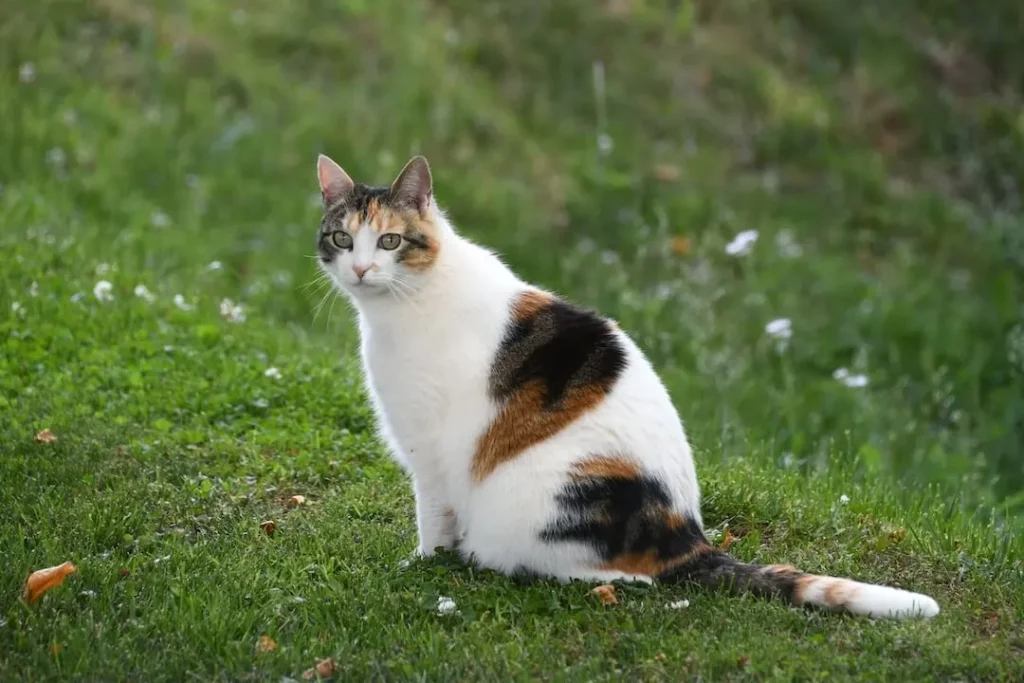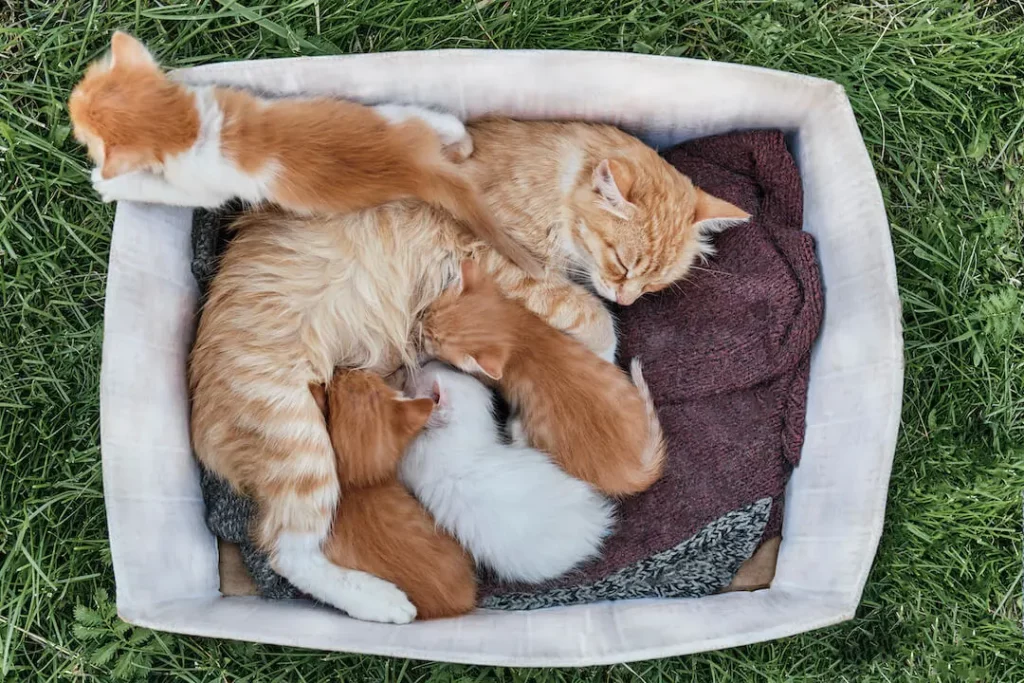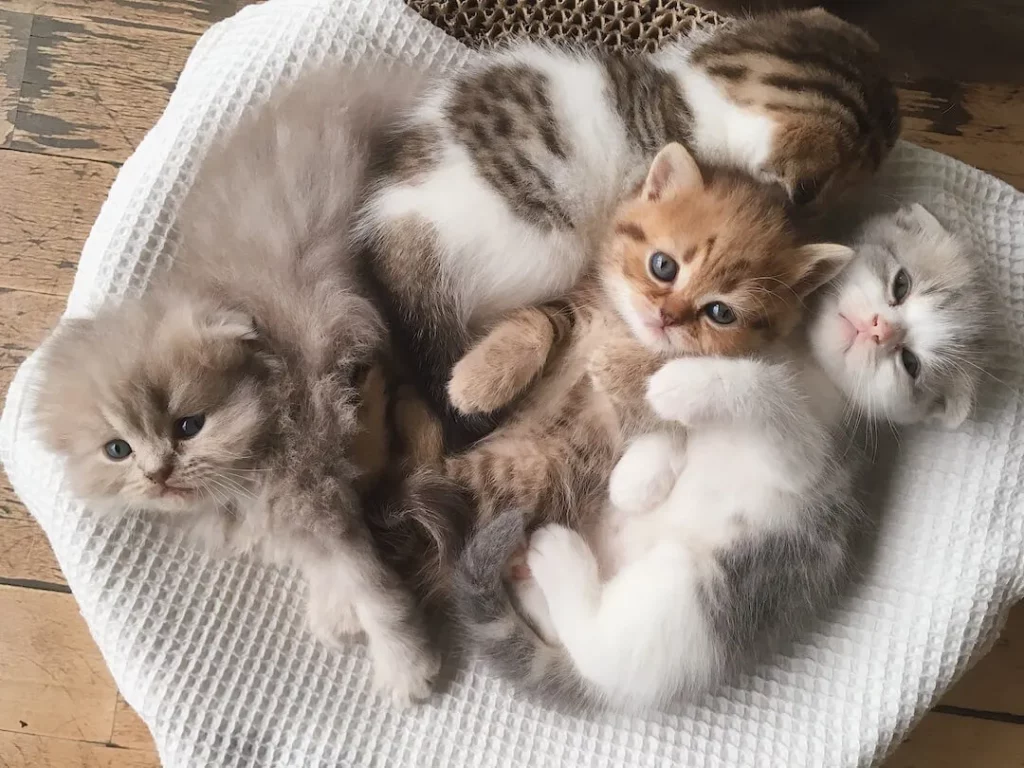Providing your cat with a comfortable birthing experience is what every paw parent wants. Sometimes, you may wonder if all the kittens have made it out of the queen, especially if it is an unexpected pregnancy. How will you know if your cat has delivered all of her babies, precisely, how to tell if a cat still has kittens inside?
Here are seven signs that can tell you if a cat still has kittens inside:
- The perineal area is swollen.
- Paw-licking.
- The cat continues to nest.
- Feel for kittens in the queen’s stomach.
- Observe any changes in appetite.
- Ultrasound or x-ray.
- Look for miscarriage symptoms.
In this article, we’ll talk about how to tell if a cat still has kittens inside her womb after giving birth. Hopefully, these tips will help you spot the symptoms early to help the queen deliver her babies safely and healthily.
7 Signs a Cat Still Has Kittens Inside
Cats are known to have split births, which means that they might not deliver all their babies at the same time. They can also halt kittening and resume much later if they feel unsafe. However, if you notice that the queen has not delivered any more kittens after three hours, you can follow these tips to check if kittens are still in the womb.
1. The Perineal Area Is Swollen
The perineal area is around the vulva and below the tail of the mother cat. By carefully running your fingers across this part of the cat’s body, you will be able to check for swelling of the vulva.
If there is swelling, there are kittens inside the queen’s womb.
It’s essential to be very gentle as this area is very delicate, especially during kittening. Sometimes, you might see part of a kitten peek through the birth canal when touching the vulva. This is normal and is an indication that your cat will start delivering soon.

2. Continuous Licking
Is your cat licking her paws non-stop? It could signal that she is about to enter or continue labor. Felines lick their bodies when they feel pain or comfort themselves when distressed. Before queening, they may also lick their vulva or abdominal area.
Queens are under a lot of stress before they begin birthing, so they will exhibit certain behaviors to help the body relax.
4. The Cat Continues To Nest
Nesting occurs in the first stage of kittening. During this stage, a queen may display these actions:
- Walking between the litter box and nesting area
- Restlessness
- Rearranging the bedding in the nest
- Scratch at the bedding/towels
If any of the above happens, it can mean that the mother cat isn’t done kittening yet. She might remain close to the nesting spot and refuse to leave. Also, cats may not move around as much in anticipation of their next birth, so it is best to leave them be.

5. Feel for Kittens in the Queen’s Stomach
Is there a bulge in the queen’s stomach, even though she has already started giving birth?
You can gently feel the mother cat’s abdomen for a lump to see if you can detect any movement from the babies. If there are any more kittens inside the queen, her stomach should move inwards, and you can feel the babies move in the direction you are pushing.
Watch this video to learn how Dr. Jace King feels for kittens in a pregnant cat:
6. Observe Any Changes in Appetite
You can observe a noticeable change in a cat’s appetite before labor begins. Take note if your cat displays the following:
- Decreased appetite
- Vomiting
- Stops eating entirely
The change in appetite can be due to anxiety or the pressure exerted by the kittens on the mother’s gastrointestinal organs. If the queen has stopped kittening but refuses any food you feed her, it could be a sign that she hasn’t finished labor yet.
7. Ultrasound or X-Ray
Typically, ultrasounds and X-rays are done before queening to see how many kittens are in a cat. However, it is still safe to ask for a scan after your cat has gone into labor.
Both an ultrasound and X-ray have different functions when trying to scan for fetuses:
- Ultrasound: Ultrasounds are good for identifying fetal heartbeat and fetal movement. Ultrasonography helps assess each kitten individually but is not accurate for determining the number of fetuses still in the womb.
- X-ray: Radiography is used to count the number of fetuses in the queen because it produces a static picture. Vets will count the number of skulls they can see in the completed scan.
8. Look for Miscarriage Symptoms
Sometimes, the kitten might not survive inside the mother. Look out for the following symptoms in the queen:
- Foul-smelling vaginal discharge or bleeding
- Fever
- Showing signs of abdominal pain
- Vomiting
- Labored breathing
If you notice this happening during or after labor, the cat has likely suffered a miscarriage.
When the mother carries her baby to full-term but miscarries, the kitten will be surrounded by a protective membrane separated from the rest of the uterus. In this scenario, the kitten can remain mummified in the womb and cause health complications.
Contact your vet if your cat has miscarried. They will do an ultrasound to confirm if the kitten is still inside before performing an emergency C-section to remove it.

Key Takeaways
Helping your cat become a mother can be an exciting experience. To ensure that all kittens are delivered during queening, you can do a few things to check if there are fetuses still inside the womb.
Some of these tips include:
- Look out for behavior changes in your cat.
- Note down any decrease in appetite.
- Feel for any kittens through the queen’s abdomen.
- Take the cat for an ultrasound or X-ray.
- Check for any adverse symptoms during and after kittening.
Thanks for reading!
If you enjoyed reading this article about how to tell if a cat still has kittens inside, you may want to checkout The Complete List of Foods That Cats Can Eat and Cats Vomiting Foam: Causes, Treatment and Prevention Tips.
Sources
- Cats Protection: How Do Cats Give Birth? This Guide Looks at the Basics.
- Creekside Animal Hospital: Cat Behavior – A Compassionate, Sensible, Effective Approach
- First Vet: Miscarriage in Cats: Symptoms, Causes, and Treatments
- Guildcrest Cat Hospital: How to Tell If Your Cat Is in Labor
- National Library of Medicine: Female Reproduction
- Pet Coach: Cat Labor and Delivery: What to Expect
- The Cat Site: My Cat Has Birthed 4 Kittens 5 Days Ago, and Now She Is Panting and Laboring Again.
- Vet West: Pregnancy and Your Cat…
- YouTube: How to Recognize the Signs That a Cat Is Pregnant

About The Author
M.D Mark D. is a Health and Wellness professional writer. Mark has authored many health articles around the following topics: Men’s Health, Women’s Health, Fitness, Nutrition, Pets Health, Mental Health, Medicine, and Supplements.